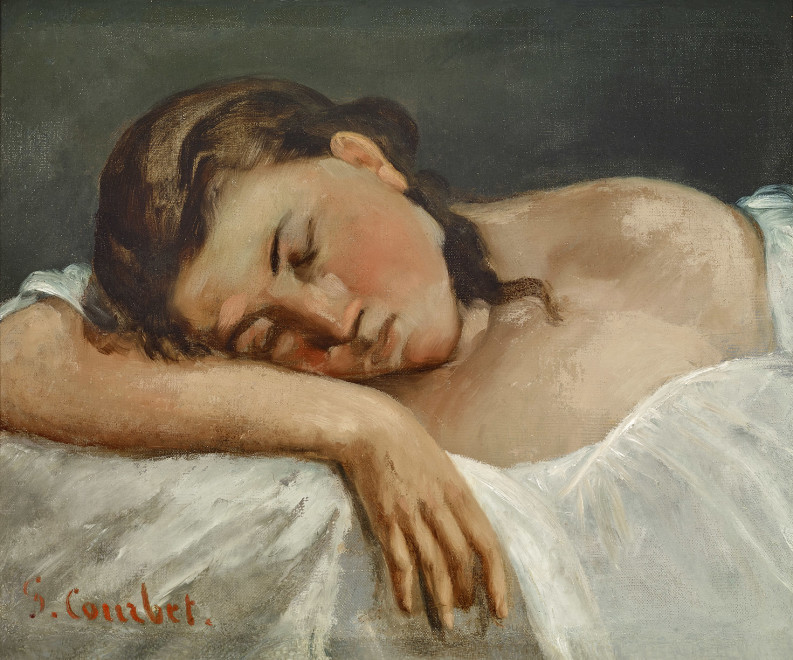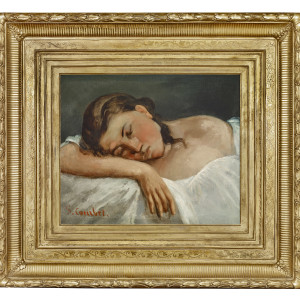38.1 by 44.5 cm.
Young Girl Sleeping is one of Courbet’s earliest paintings to explore the theme of a woman asleep.
Provenance
Gérard Collection
Théodore Reinhart (1849-1919)
Hans Reinhart (1880-1963), by 1942 (exhibition label verso, acquired likely by descent from the above)
Jacques Guérin
Weinberg Collection
Thomas Ammann Fine Art, AG., Zurich
Private European Collection (and sold: Christie’s, New York, April 23, 2003
Private Collection, Minneapolis (acquired at the above sale)
Exhibited
Paris, Salon, 1848, no. 1011.
Basel, Kunstmuseum, Der Winterthürer Privatbesitz, 1942, no. 69.
Zurich, Thomas Ammann Fine Art, Faces and Figures, June-September
1989, no. 1 (illustrated)
Minneapolis, Minneapolis Institute of Arts, January 26, 2016-August 6, 2018
Literature
Georges Riat, Gustave Courbet,
peintre, Paris, 1906, p. 48 (illustrated)
Robert Fernier, La vie et l'œuvre de Gustave Courbet, catalogue
raisonné, Paris, 1977, vol. 1, p. 48, no. 79 (illustrated p. 49)
Gustave Courbet, 1819-1877, exh. cat., Paris, Grand Palais, 1977, p. 26 and London, Royal Academy of Arts, 1978, p. 26
Catalogue note
Executed in 1847 and exhibited at the Salon of 1848, Young Girl Sleeping is one of Courbet’s earliest paintings to explore the theme of a woman asleep. He would return to this subject time and again choosing to portray a variety of female types, where their only shared trait was that they were shown sleeping. The subjects were diverse, ranging from a comely spinner (1853) to a corseted Parisienne on the banks of the Seine (1856) to the beautiful Greek goddess, Psyche (1864). This theme would culminate in The Sleepers (1866), a large-scale painting of two nude women entwined in an embrace on a large bed, among Courbet’s most erotic and sensual paintings. Our painting, on the other hand, strikes a much more innocent note. The young model appears in a dream-like state, her head gently resting on her arm; the pose may derive from an earlier pencil drawing showing Courbet’s younger sister, Juliette asleep while reading a book (circa 1840). In the oil, the girl’s innocence is only matched by her ethereal beauty, yet Courbet has still managed to capture her nascent sensuality, the folds of the white drapery concealing, yet subtly emphasizing, the curves of her body. The picture evokes Picasso’s lyrical portraits of Marie-Thérèse Walter, where often the subject, mood and composition are similar to those in Young Girl Sleeping. Courbet, like Picasso, would herald a new age by defying so much of what had been acceptable in order to create a new interpretation of what could and should be defined as art. They each revolutionized and changed the course of art history.




